Here’s just a small sample of some of our plants that bees enjoy in
- Spring
- Summer woodies: Trees, vines, and shrubs
- Summer herbaceous plants (this page)
- Fall, including goldenrods!
Herbaceous nectar plants for native bees in the summer
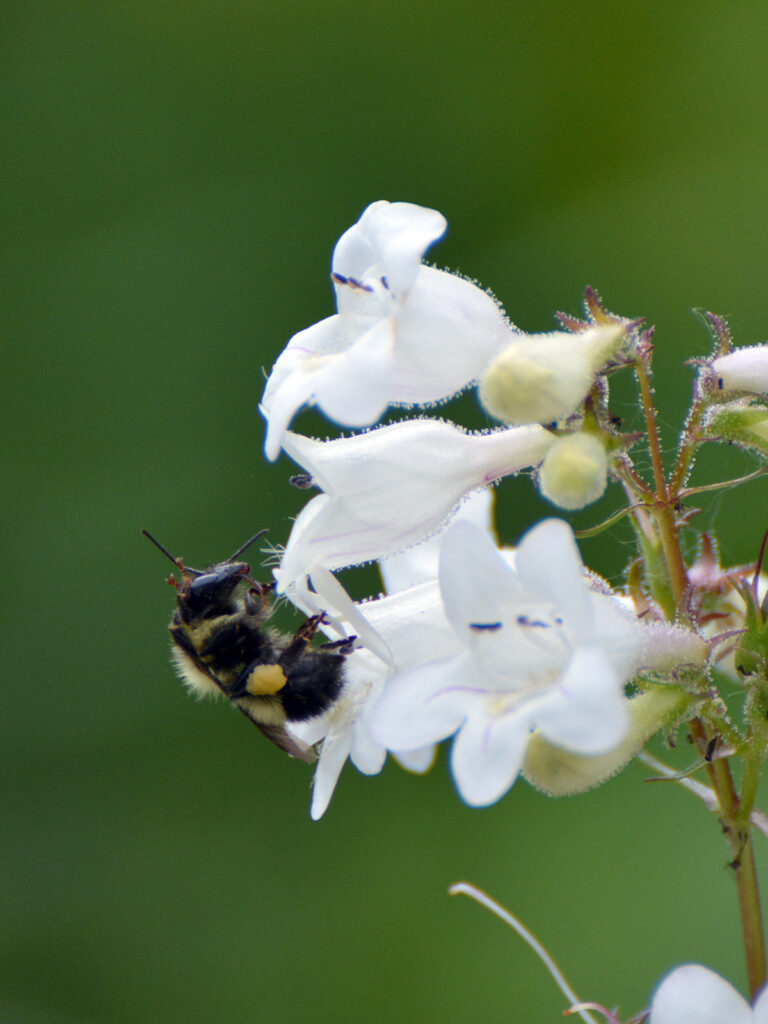
Here a bumble bee is getting nectar from a penstemon (Penstemon digitalis). Penstemon blooms very early in the summer, before most of the other plants below, and so it’s a nice bridge between the early spring plants and the summer plants.
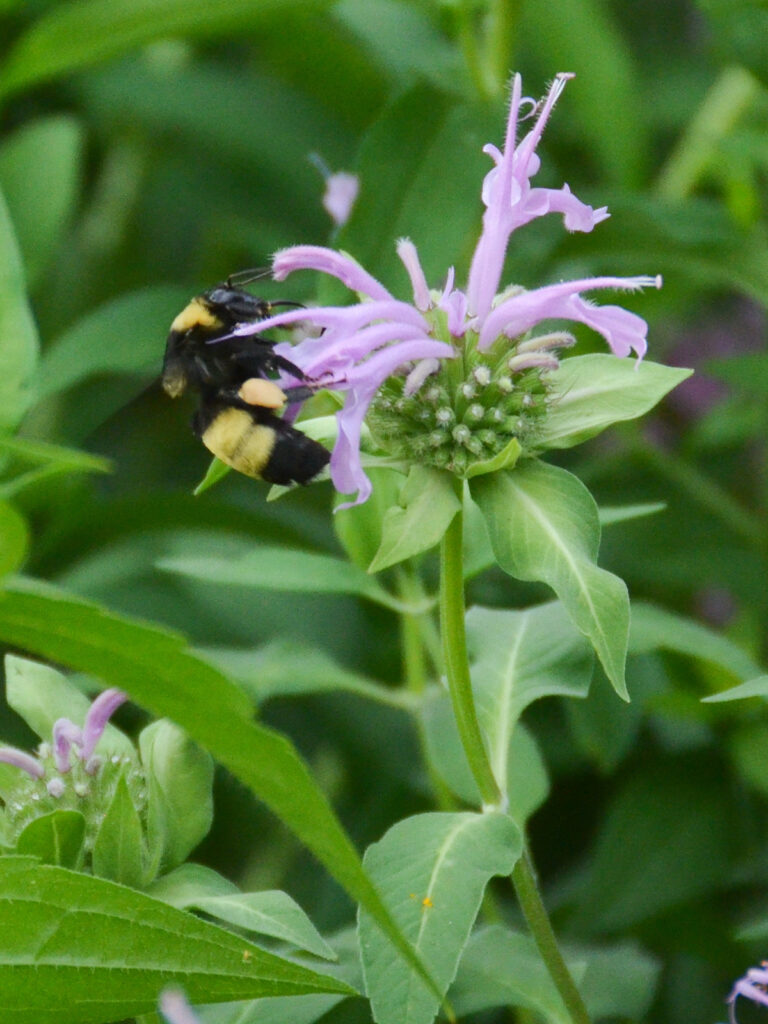
Bergamot (Monarda fistulosa) must be full of nectar, like most members of the mint family, since bees (and other interesting insects, such as hummingbird moths) are always around when it’s blooming.
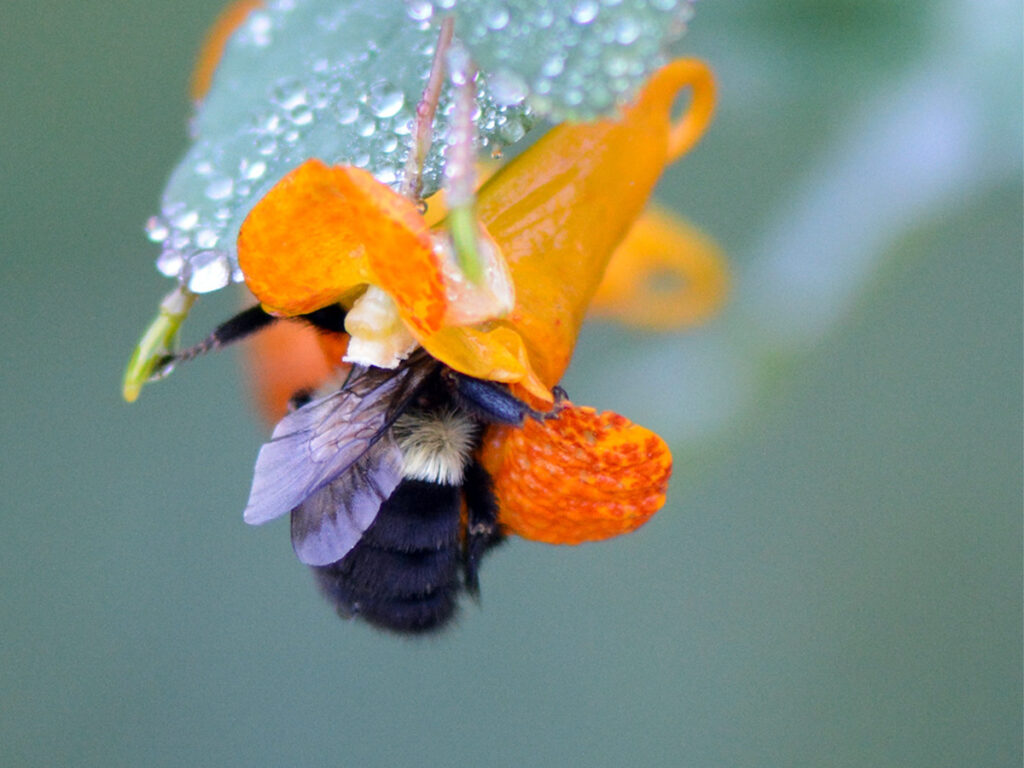
I love jewelweed (Impatiens capensis) and so do the bees and hummingbirds. It’s the only annual plant I grow (except sometimes sunflowers).
As the botanic name indicates, it’s the native form of the familiar bedding plant impatiens. The hybrid bedding plant doesn’t have much if any nectar (it’s created for people, after all), but this native version certainly does.
Even though it spreads enthusiastically, it’s incredibly easy to pull out and compost since it has an extremely shallow root system.
It’s also called touch-me-not since the seed pods pop open when they’re ripe, a very effective strategy proven by the fact that jewelweeds pops up everywhere.
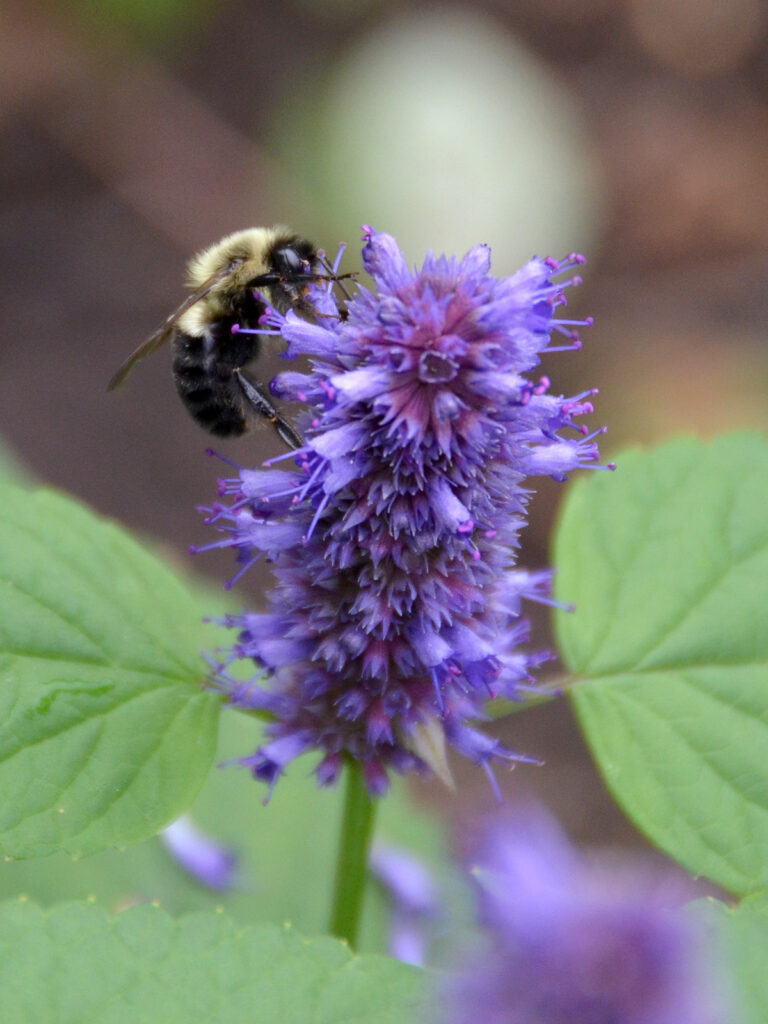
Anise hyssop (Agastache foeniculum) is a bee favorite. They love it!
They serve another purpose, too: Birds (especially the vegetarian goldfinches) love the seeds.
It’s one of our favorites as well. We grab a leaf to crush every time we go by to enjoy the wonderful minty-licorice scent. Apparently, it’s also an edible herb that people use in food or to make a tea, but we haven’t tried that.
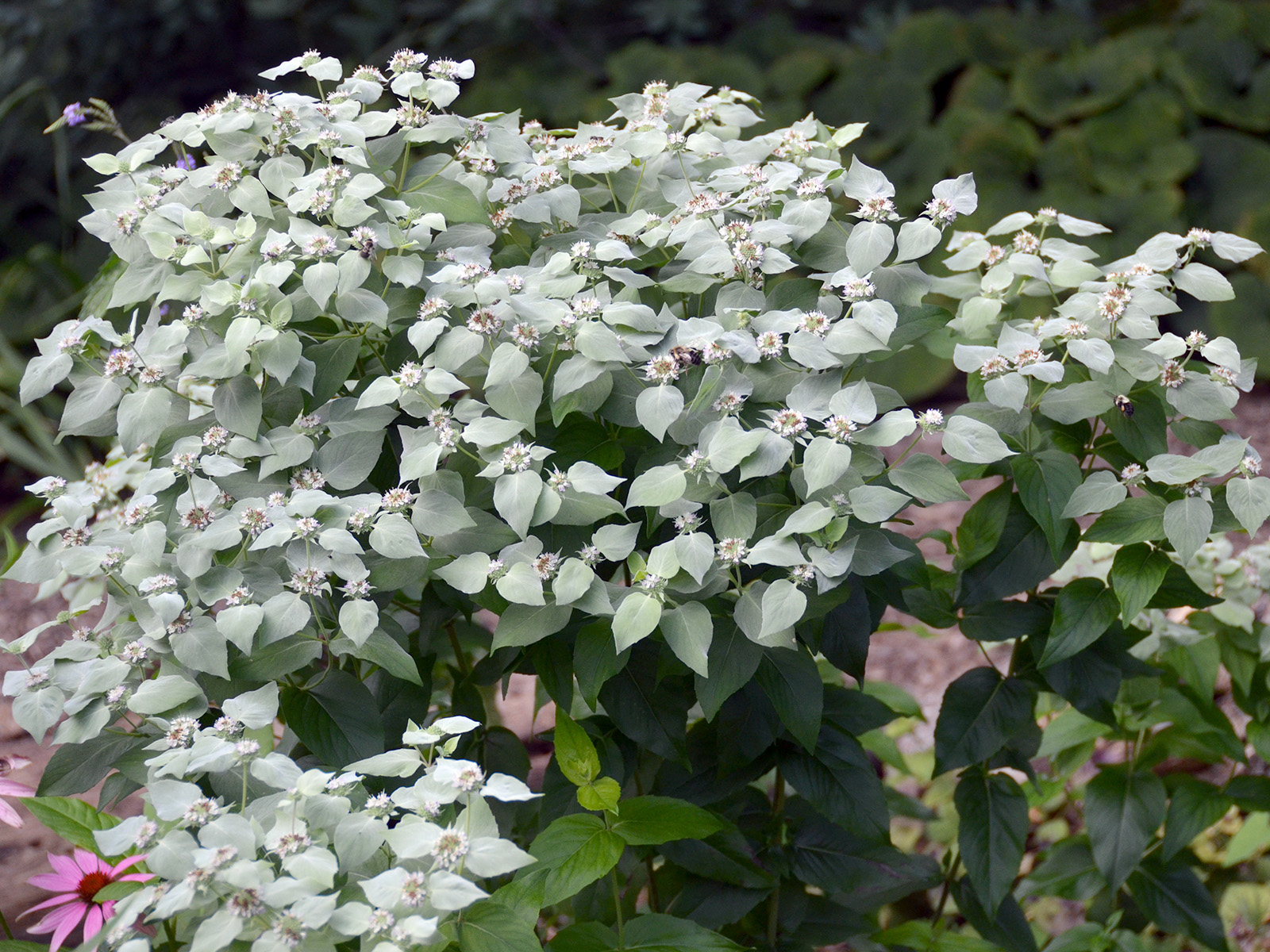
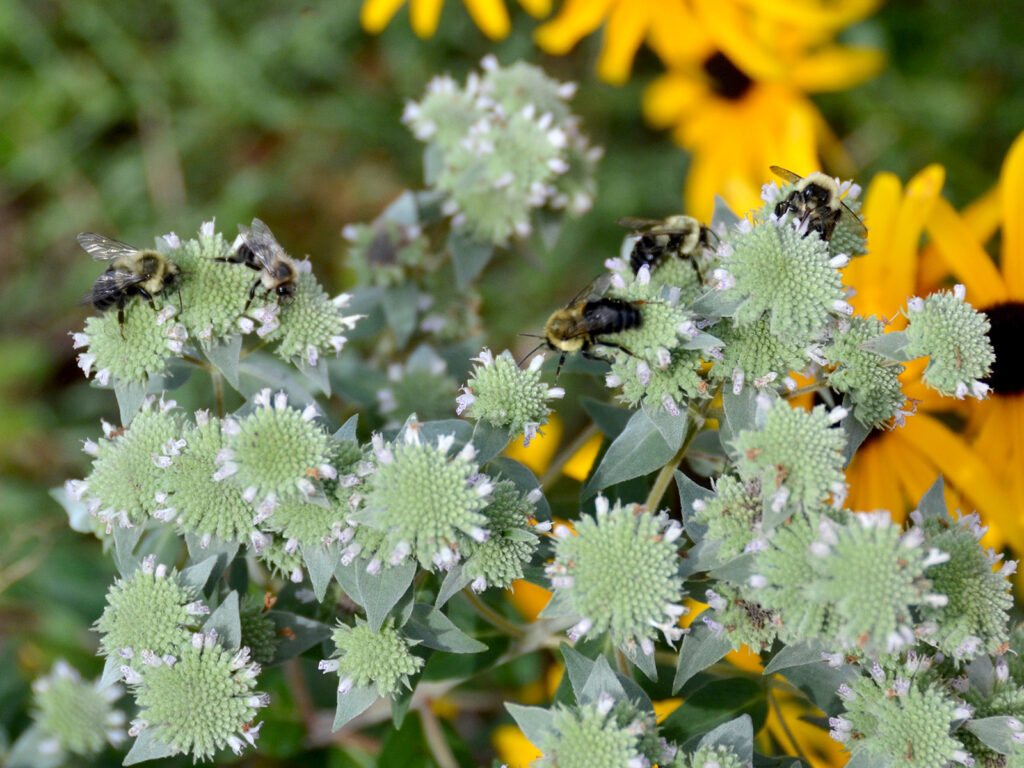
Mountain mints (Pycnanthemum spp.) is a favorite nectar plant for bees and for solitary (non-aggressive) wasps, too. A patch of these plants creates a very attractive whitish cloud of “flowers” (actually the bracts). This has the strongest, mintiest scent of any plant I’ve ever grown, and I just love it.
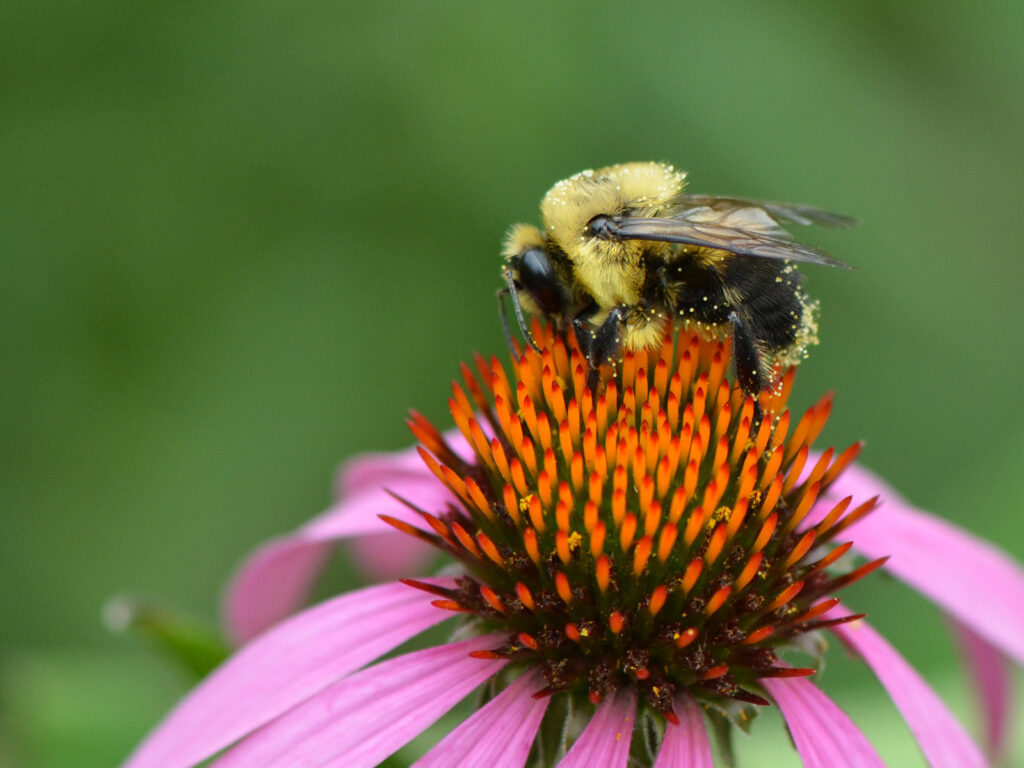
The purple coneflower (Echinacea purpurea) is a favorite of bees and also of monarchs.
Birds — especially goldfinches — love the seeds, too, now that I no longer deadhead them as I used to do as an ornamental gardener.
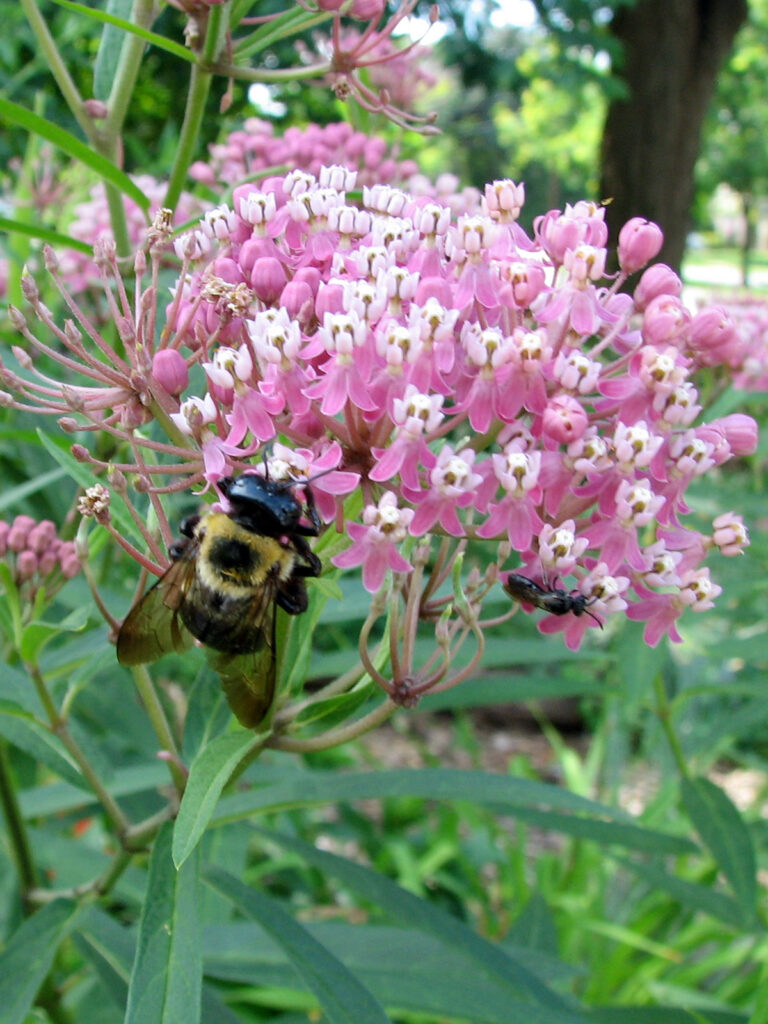
Milkweeds, such as this swamp milkweed (Asclepias incarnata), aren’t just for monarchs.
This happens to be a carpenter bee, which is about the same size as bumble bees. You can distinguish them by looking at their abdomen: the abdomen of carpenter bees is shiny. Some people kill carpenter bees, but they’re also considered a beneficial insect. For what it’s worth, we have a lot of carpenter bees and haven’t had any damage.
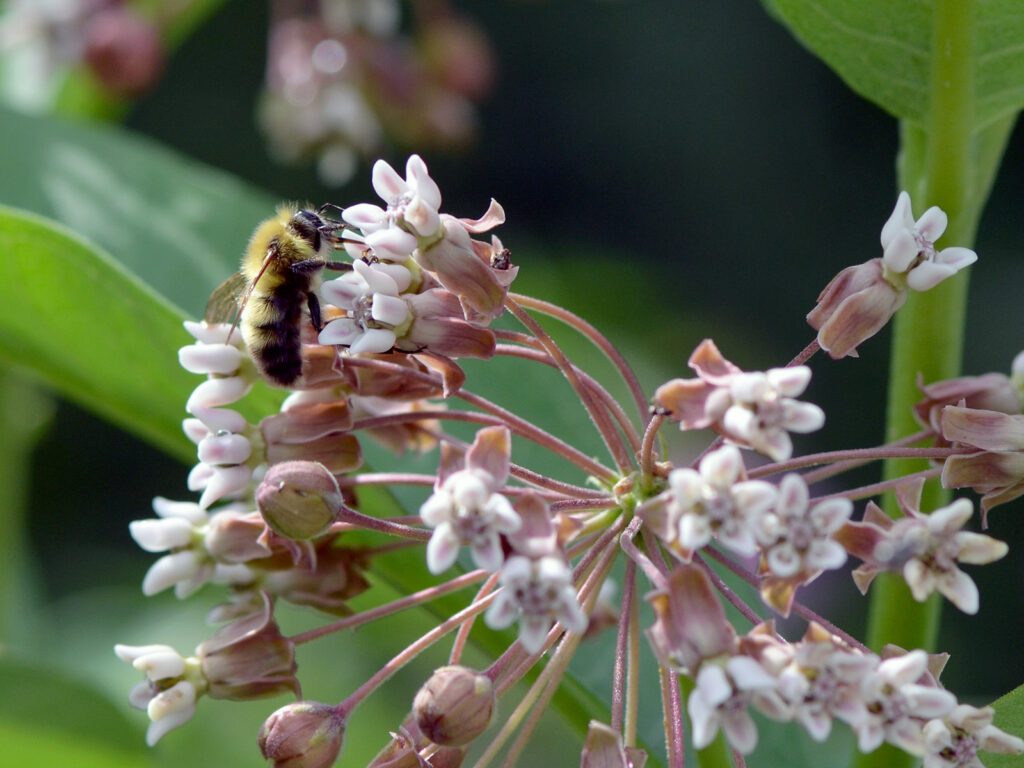
Common milkweed (Asclepias syriaca) does triple duty. It’s a host plant for monarch butterflies, a nectar plant for other butterflies and insects, and glorious fragrance for me.
Unfortunately, this could be inconvenient to have in a really small yard since, unlike swamp milkweed or butterfly weed, it spreads by rhizomes underground. I don’t find it to be a problem, though. I just pull up any stray stems (making sure I don’t get the sap in my eyes).
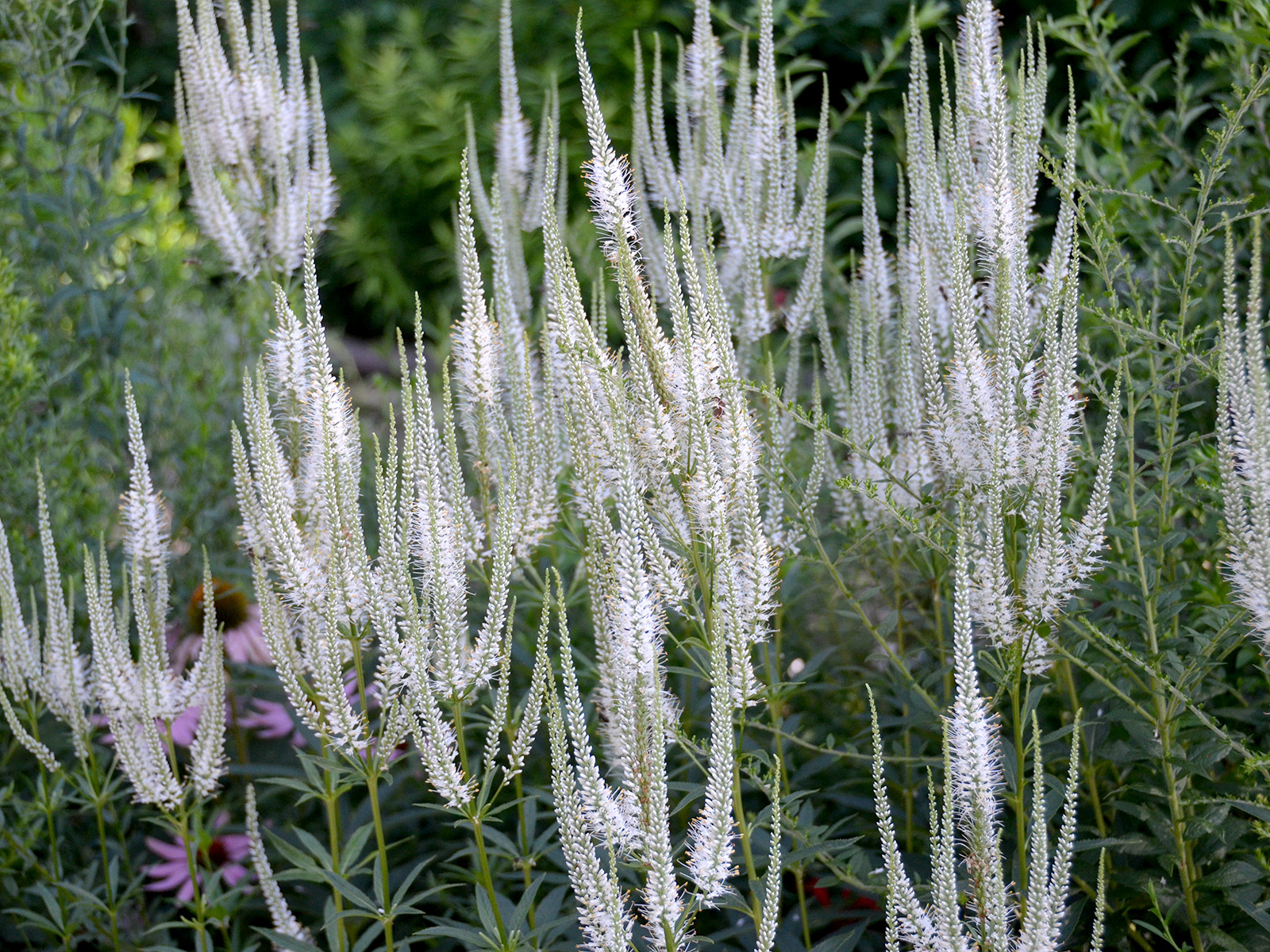
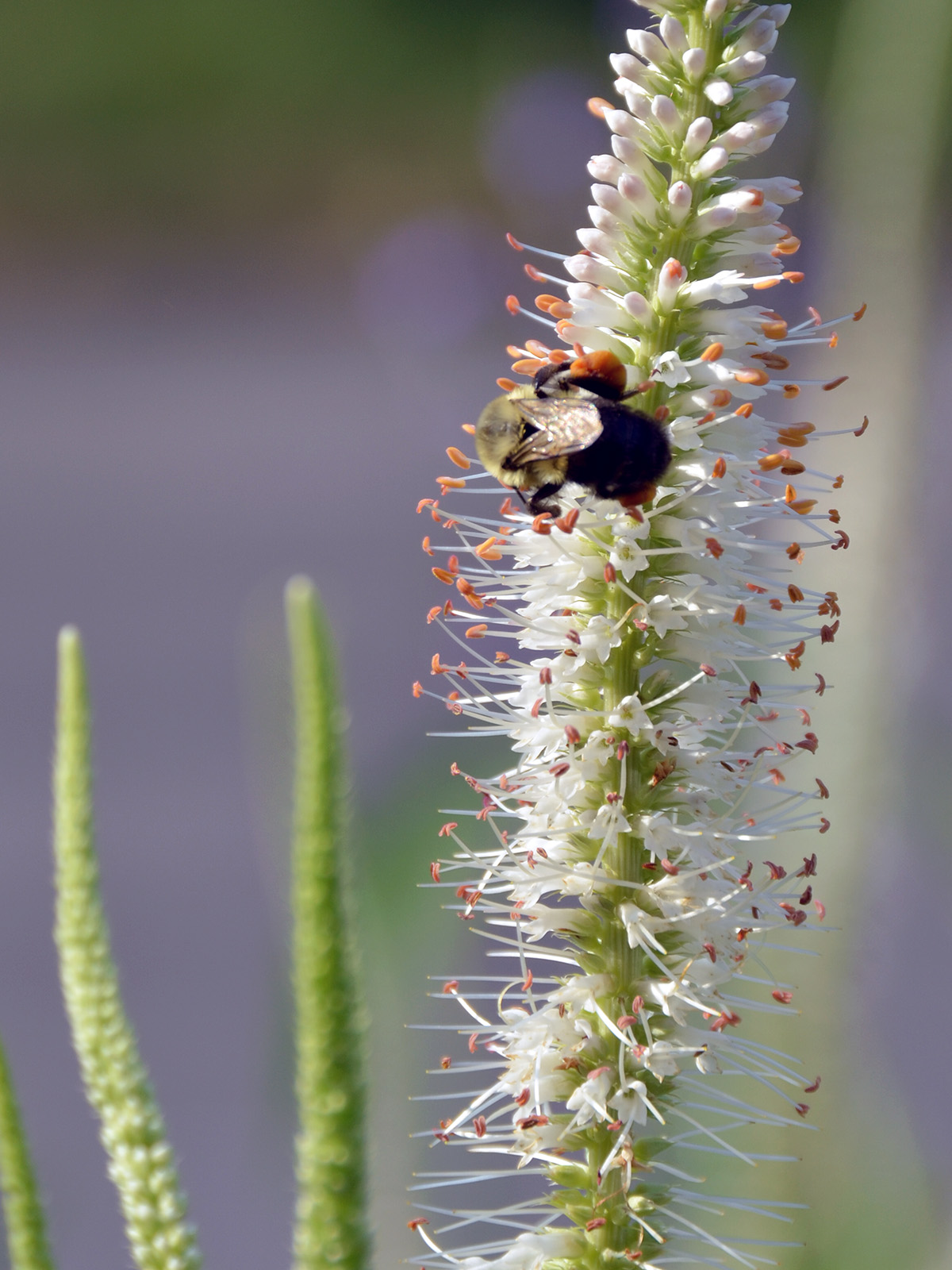
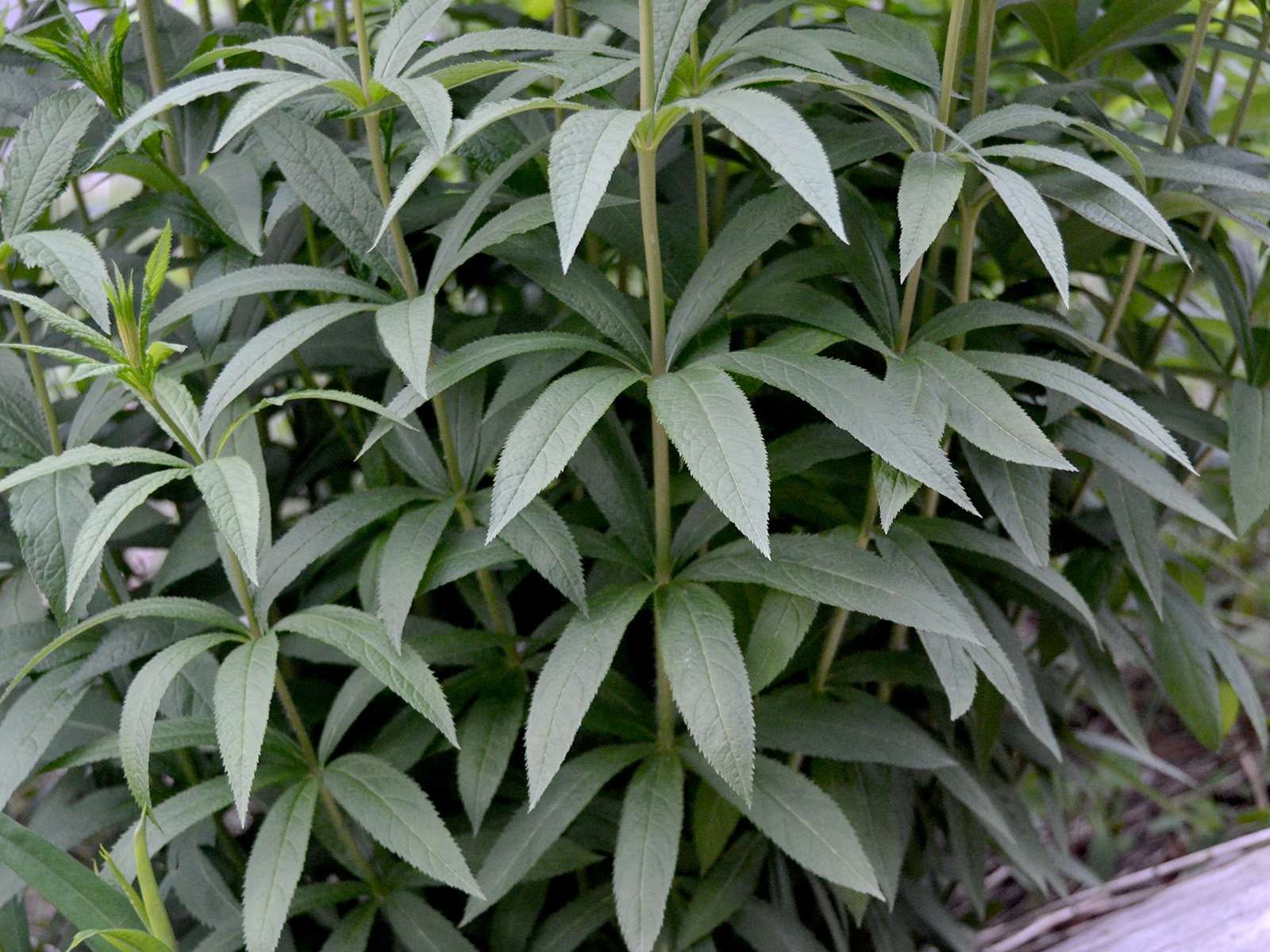
Culver’s root (Veronicastrum virginicum) has become one of my favorite plants. There’s always a lot of bees around this plant. The foliage is also very attractive and neat-looking.
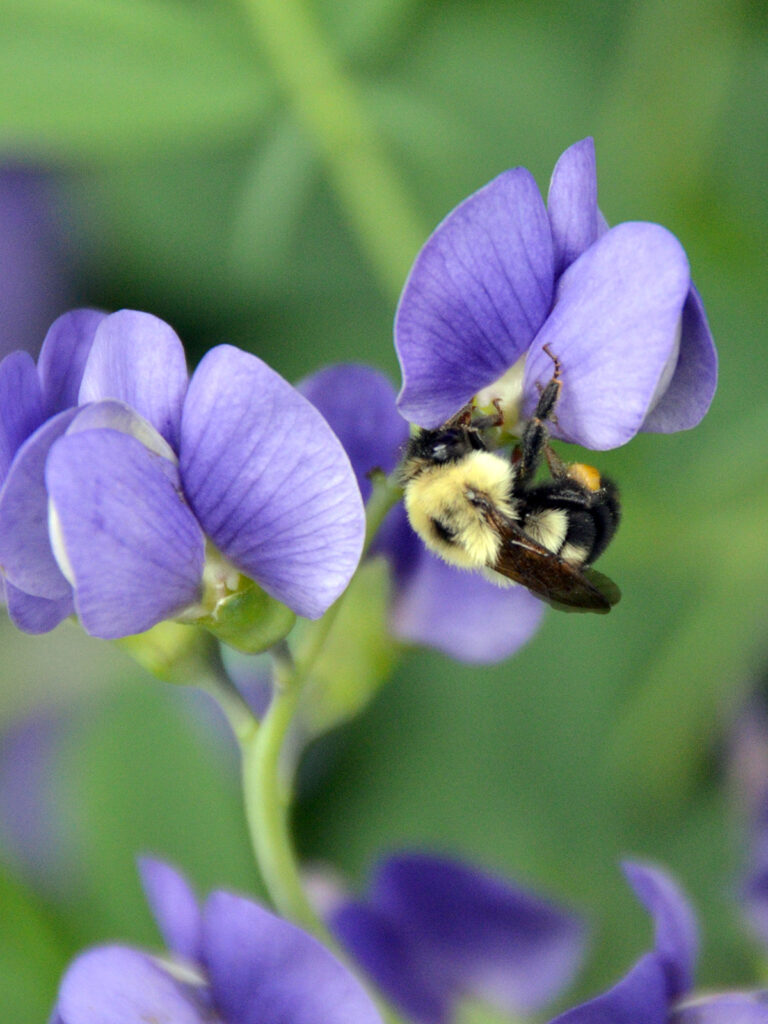
Wild indigo (Baptisia australis) is another bee favorite. I’ve heard that the pioneers used it for blue dye. It does look like blue jeans color.
For some reason, it’s a plant that passers-by often ask about, perhaps because of its beautiful foliage in addition to its striking color when blooming.
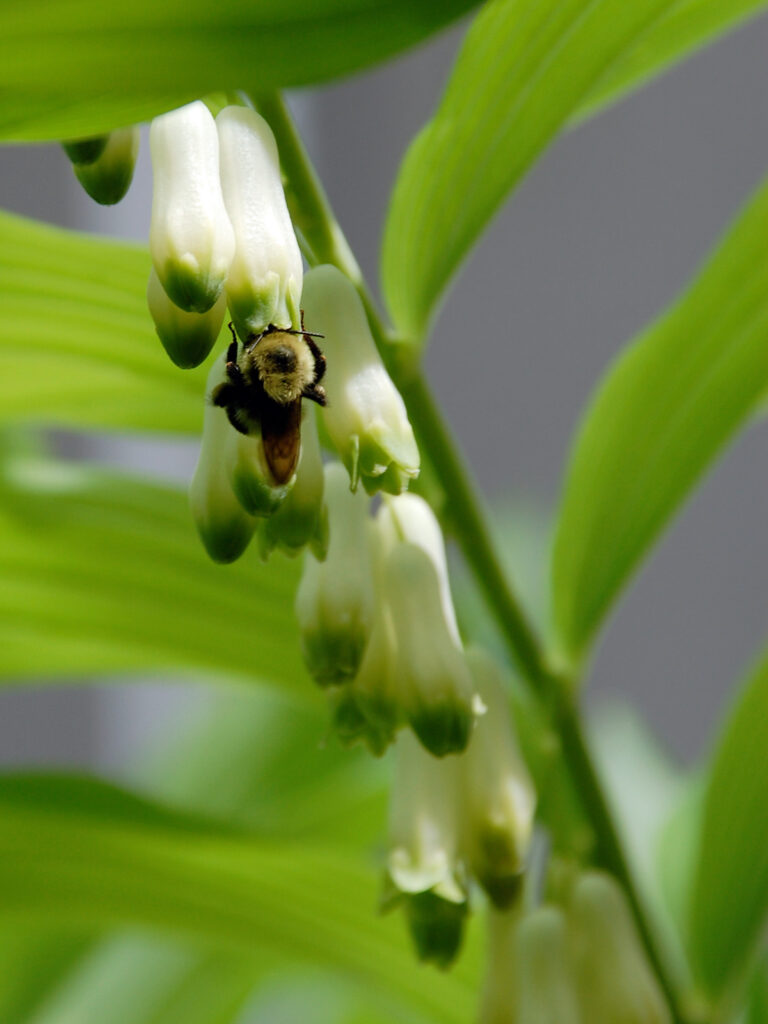
Most of my solomon’s seal (Polygonatum biflorum) is the plain species, and I also have some of the giant solomon’s seal (P. commutatum), too.
Unlike this bee, I used to think solomon’s seal was kind of boring. As I’ve grown (or maybe just aged), I now appreciate its elegance, and it’s become one of my favorites.
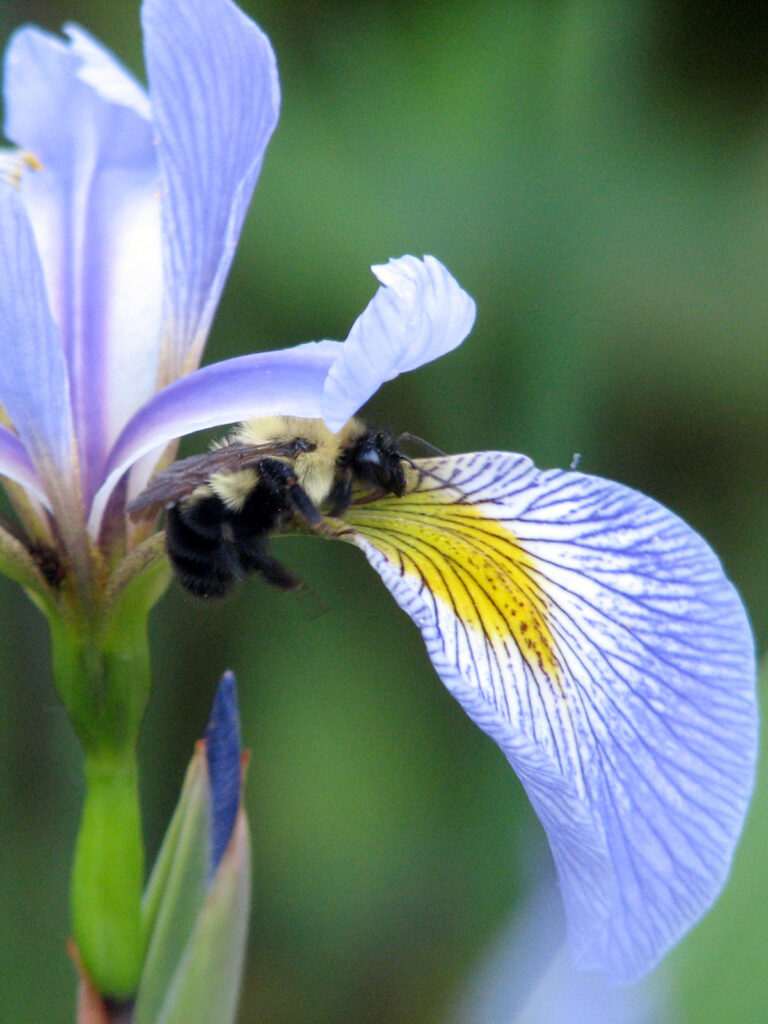
I love the way bees manage to get to the nectar. This bee is pushing its way into this native iris (Iris versicolor).
Years ago, I thought the only kind of iris was the common non-native iris. This one may not be as large, but it’s beautiful!
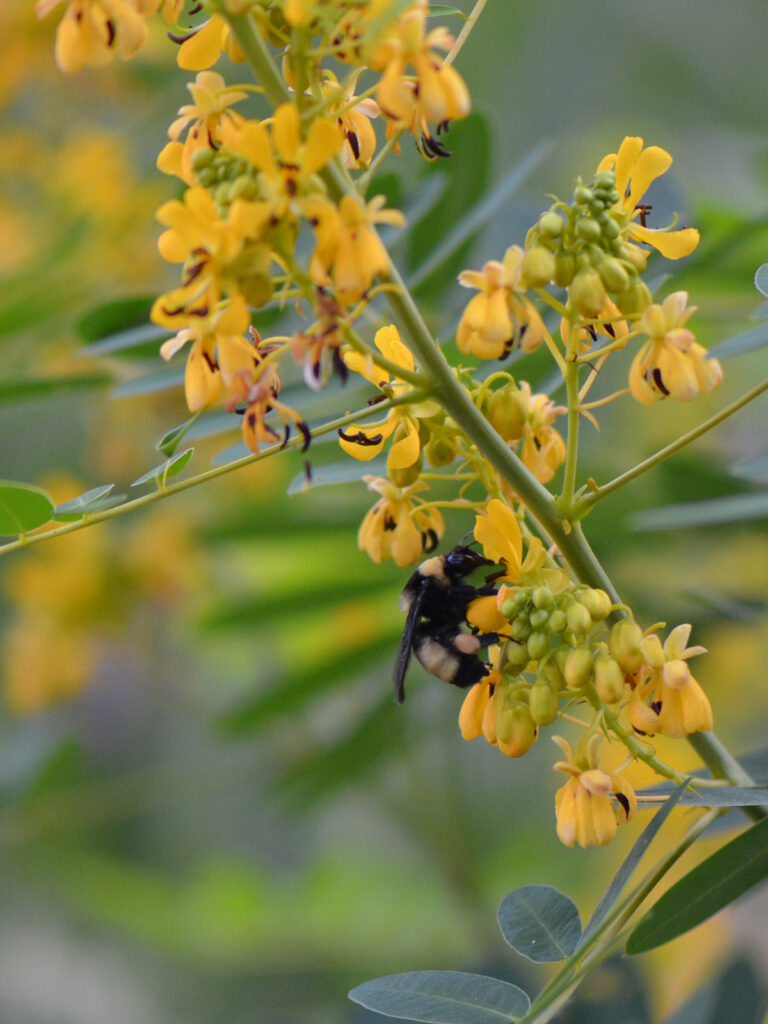
Another bee favorite is wild senna (Senna hebecarpa) (also known as Cassia hebecarpa). These are tall plants with golden flowers, beautiful foliage, and attractive seeds.
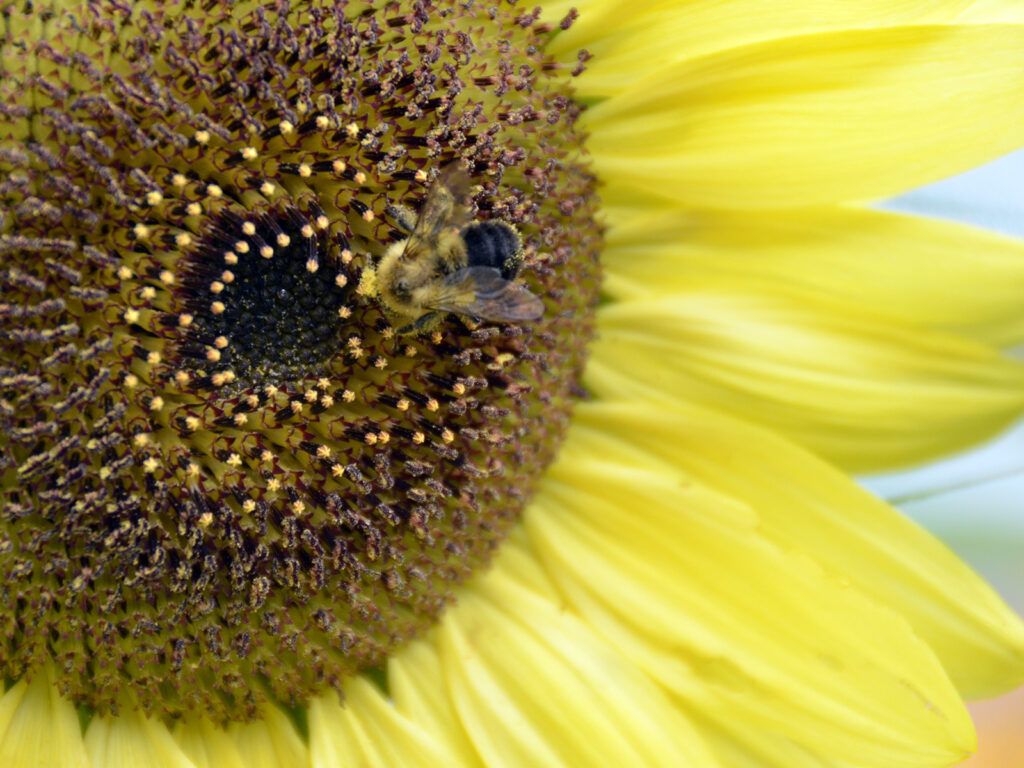
This sunflower is an American native (Helianthus annuus). This particular cultivar ‘Lemon Queen’ is specified by the Great Sunflower Project, a community science project I have participated in. They use H. annuus for the project since it’s such a good plant for bees.
IMPORTANT: Some sunflower cultivars are selected so that they have no pollen (to keep tablecloths clean, I guess), so they’re pretty useless for bees, and therefore for me …
Reflections
Despite its apparent lack of marquee appeal, a decline in pollinator populations is one form of global change that actually has credible potential to alter the shape and structure of terrestrial ecosystems.
~ May Berenbaum, National Research Council, Panel Chairman
